Designing a Multihulled Ferry with ANSYS Fluent
By T. Noyan Kılınç and Bahadır Baskan – Why today’s modern multihull vessels demand more than conventional ship design.

Multihull vessels pose engineering challenges that go beyond the capabilities of conventional ship design methods. Their design requires advanced techniques to optimize multiple performance parameters, including resistance, endurance, stability, and seakeeping. In this article, we provide an inside look at the iterative design process carried out by KUASAR MARIN Engineering Inc. for a high-speed, three-hulled passenger ferry intended to rival conventional catamaran hull forms.
Baseline Design Encounters Problems
Initial design efforts yielded a solution comparable in size and displacement to a typical catamaran ferry. Using ANSYS Fluent, we analyzed this baseline design to assess its resistance and flow characteristics at a cruising speed of 27 knots.
The results revealed three primary issues: ventilation in the propeller tunnels, insufficient submergence of the side hulls due to aft-region free surface depression, and large-amplitude bow divergent waves interacting with the side hulls.
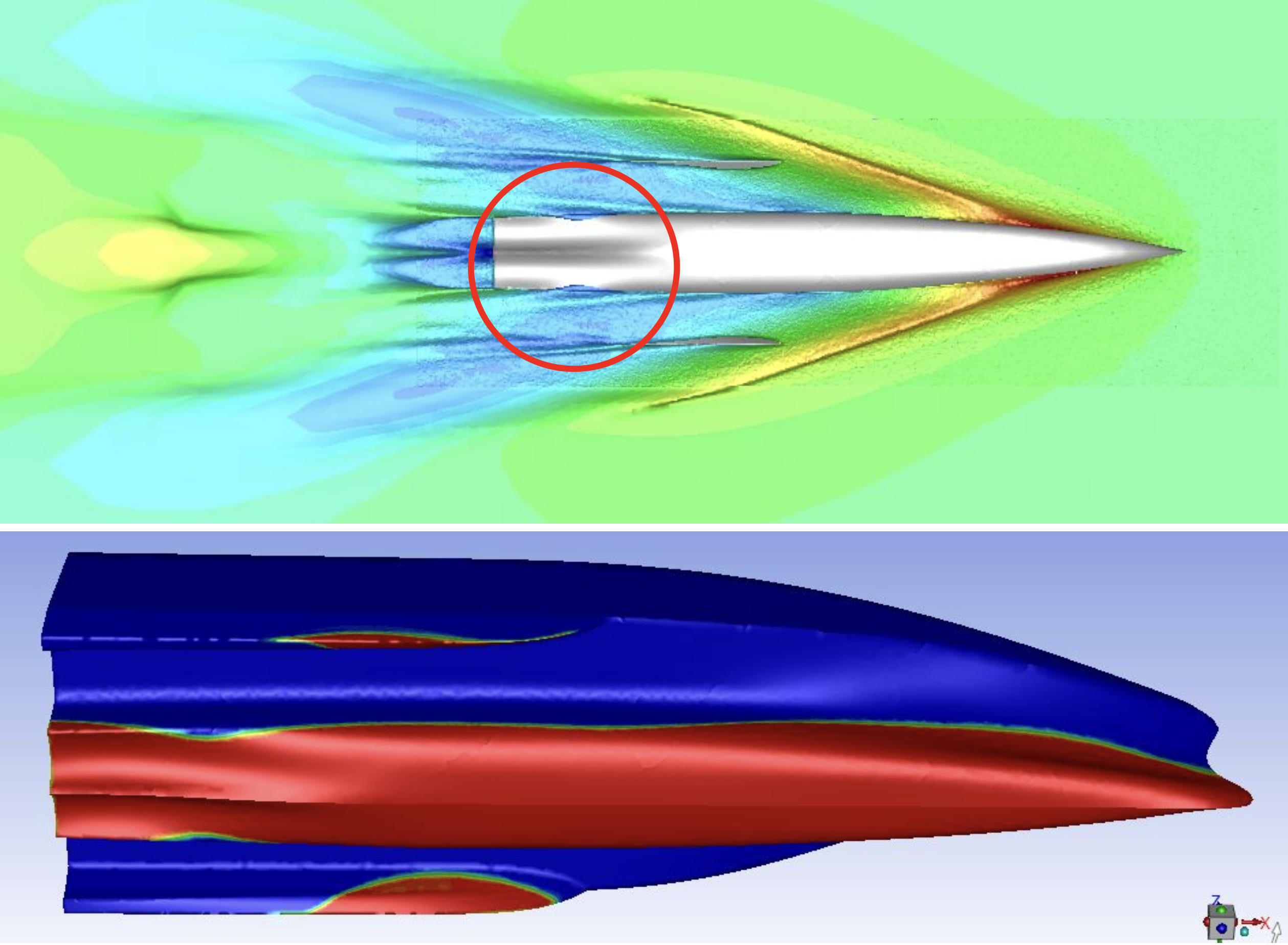
Resolving Ventilation and Bow Wave Problems
To resolve these problems, we conducted CFD analyses on iterative hull geometry modifications. To streamline the process, the initial variants were modeled without side hulls and superstructures, focusing on the central hull, which influenced both ventilation and bow wave behavior.
Variant 1 introduced a redesigned tunnel side chine and bow entrance. Post-analysis, we exported the free surface and trimmed geometries from ANSYS Fluent into CAD software via CFD-Post for 3D evaluation. The changes effectively mitigated the ventilation issue, and bow wave amplitude was reduced. However, further geometric refinement was necessary to laterally shift the bow wave away from the side hulls.
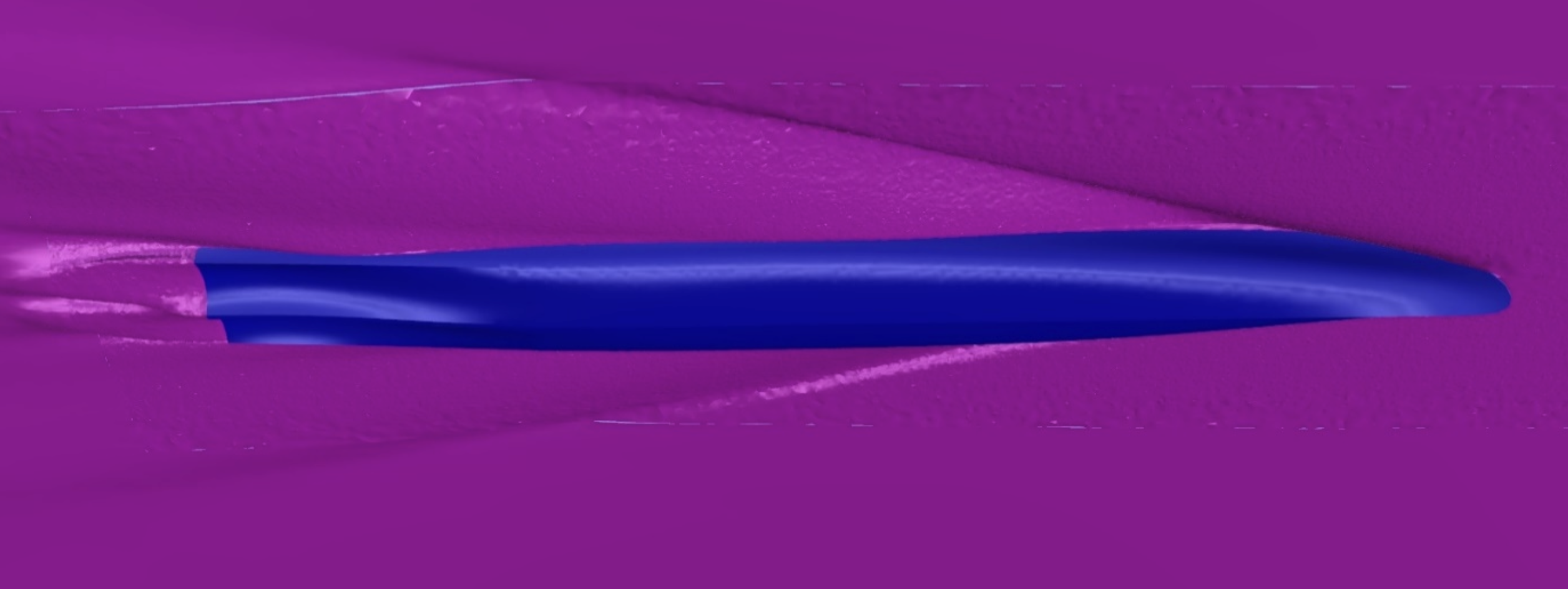
Variant 2 incorporated sectional geometry changes to advance the bow wave crest. While wave amplitude remained largely unchanged, the wave crest shifted slightly forward, aligning with our goals.
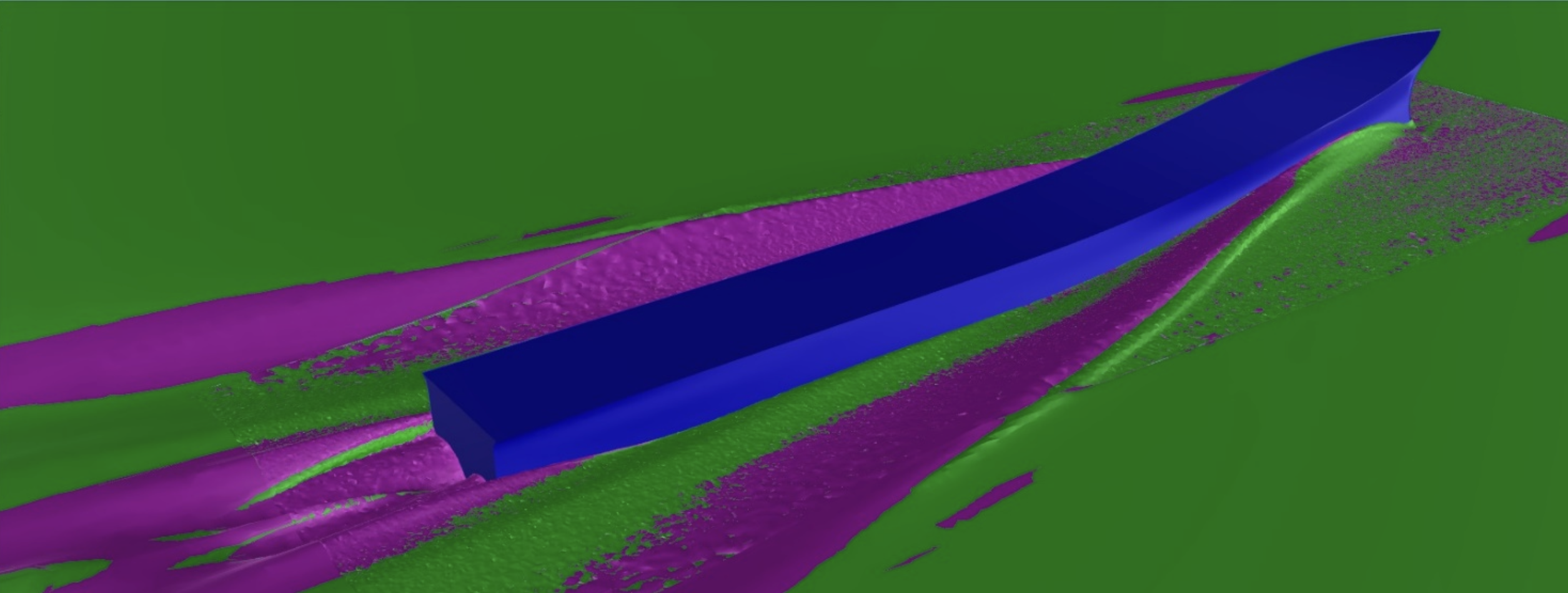
Solving Side Hull Submergence Problem
With ventilation and bow wave issues addressed, focus shifted to side hull submergence. A full model based on Variant 2 was created, extending the side hulls below the water surface depression. Analysis confirmed proper submergence and improved transverse stability.

Reducing Resistance by Eliminating Excessive Spray
Next, we targeted spray formation, a contributor to increased resistance. High bow waves produced spray sheets on all hulls. Spray deflector chines were designed in CAD using exported mesh data from ANSYS Fluent. Variant 3 featured these additions, which limited spray extension and reduced frictional resistance.

Figure 8 shows the improvements achieved on spray formation by the deflector chines. As seen, chines are now limiting sprays and pushing them away from the hulls to decrease frictional resistance.
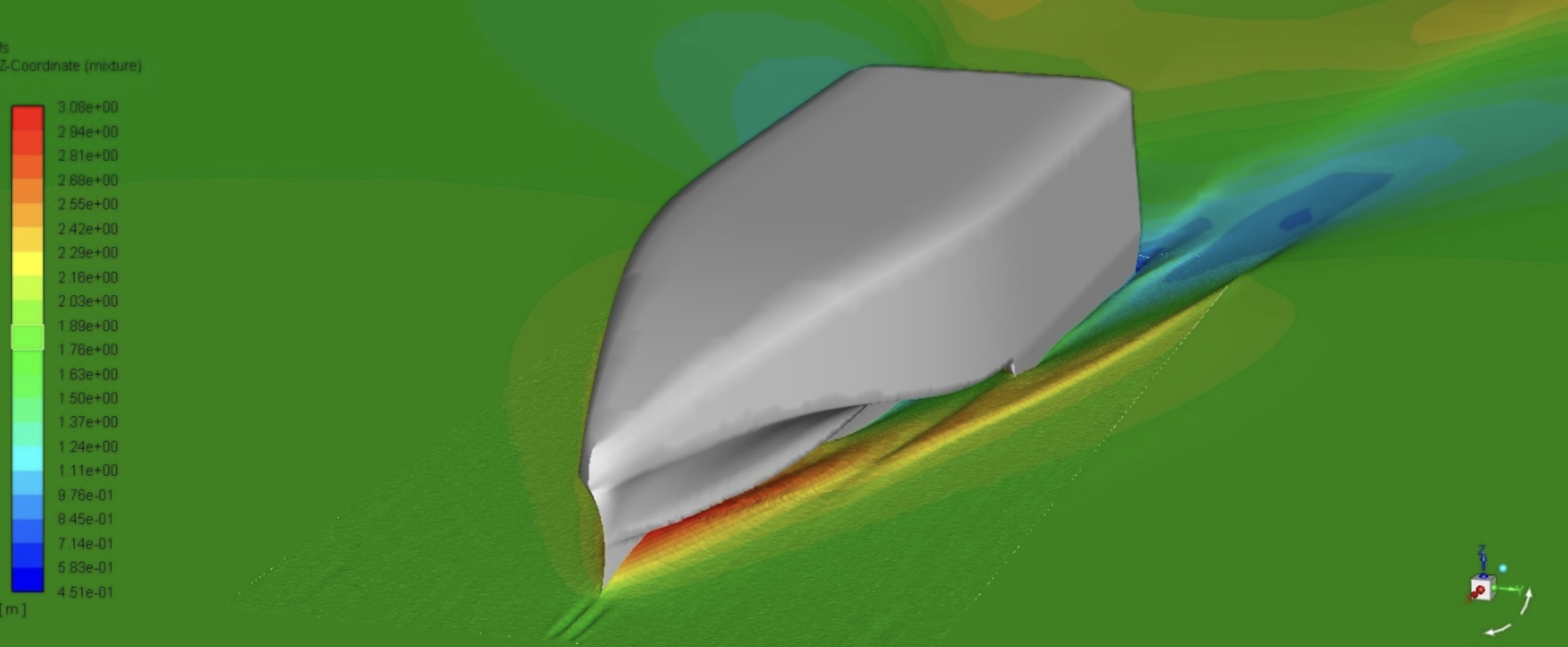
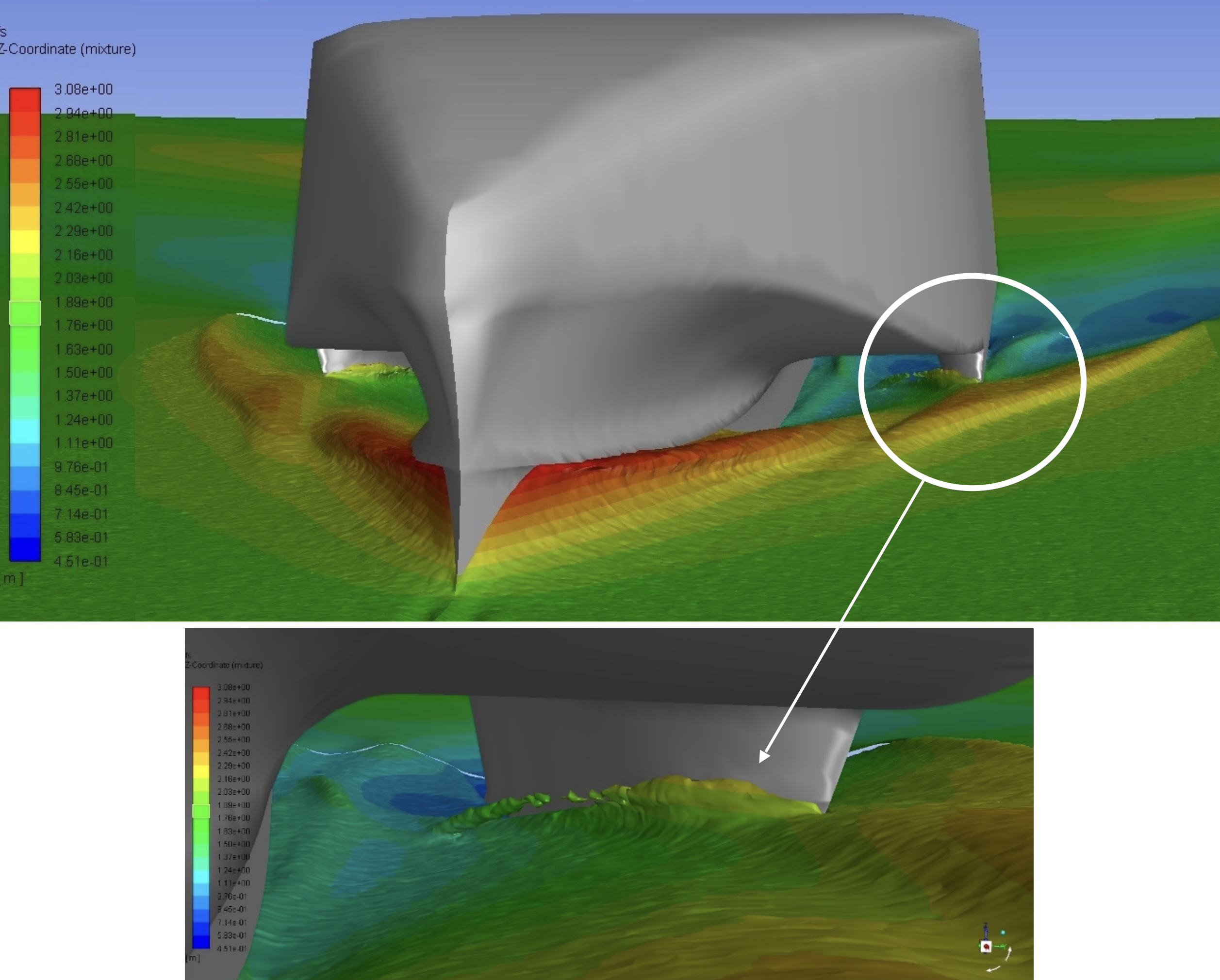
Comparison of Final Design to Baseline Design
The final design, Variant 3, was compared to the baseline (Figure 9). It eliminated tunnel ventilation, ensured proper side hull submergence, and reduced bow wave amplitude by approximately 18%. The side hulls now contribute 97% more to transverse moment of inertia. Despite a 1% increase in wetted surface compared to the baseline, the deflector chines reduced wetted surface area by 3% over Variant 2.
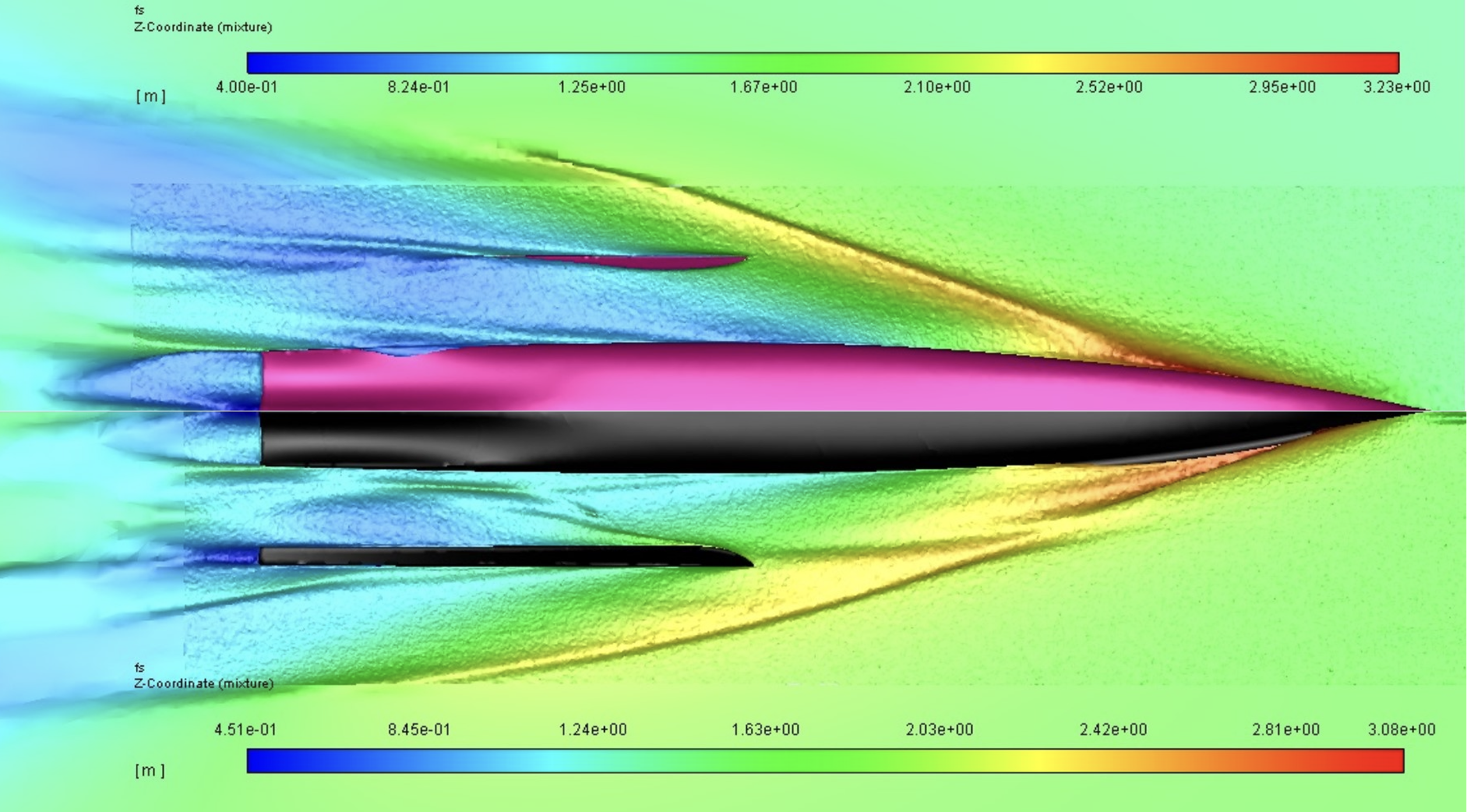
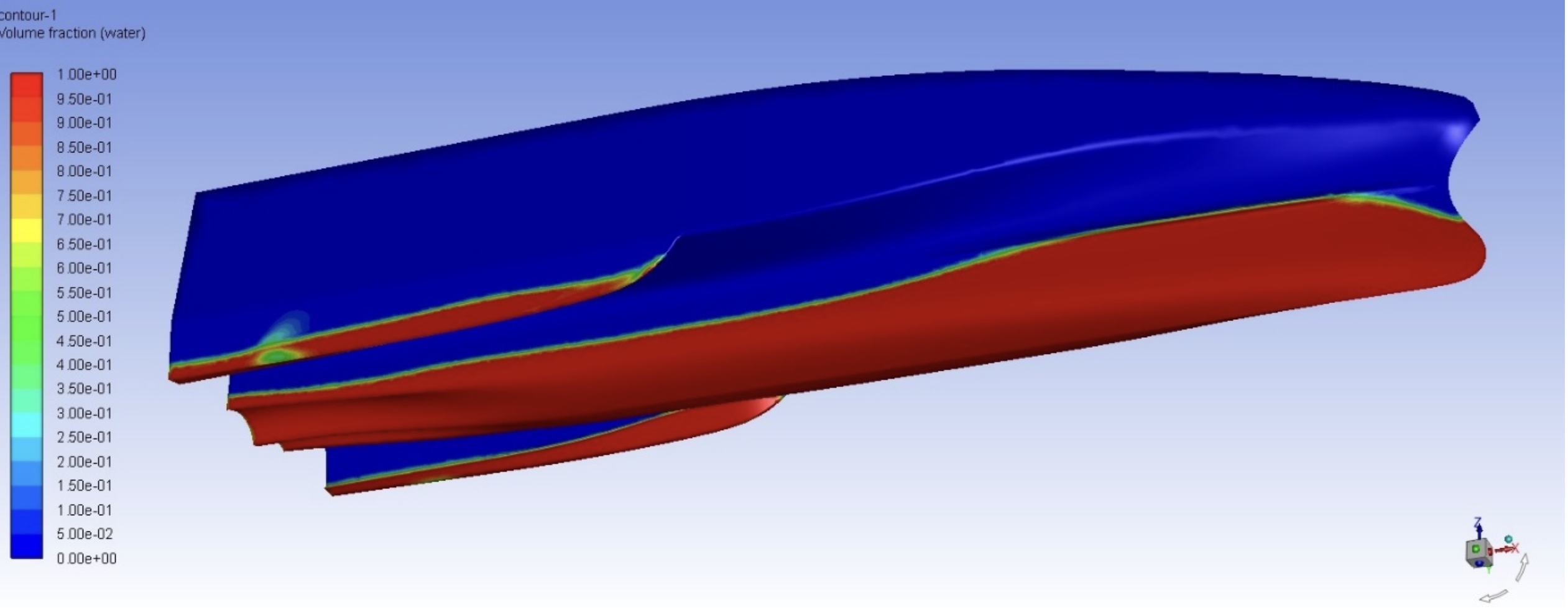
Figure 10 shows the wetted surface distribution of the final design. On the central hull, the effect of the chines can be seen at the forward sector (there is no extension above them). The propeller tunnels are fully wet (no ventilation) to provide suitable flow. The chines on the inner surfaces of the side hulls limit the extension of flow successfully at the chine contour. There is a minor ventilation at the outer surface of side hulls, but this has no adverse effect on stabilization and/or increased resistance.
Conclusion
ANSYS Fluent has once again proven to be an effective tool for developing unconventional vessels that cannot be described by classical engineering techniques. For multihull ships, designers need to investigate not only the resistance but also the flow characteristics to validate and improve their designs. Advanced engineering techniques have enabled designers to incorporate this kind of investigation into early-stage development to save resources and gain faster feedback for design improvements. These techniques also provide information about the magnitude of improvements that are possible, which is so critical when deciding whether or not to pursue a particular solution. Utilization of ANSYS Fluent in our development work reduced resistance at least 10 percent in comparison with the catamaran hull form. This three-hulled concept can now be further developed to meet our customers’ needs.

